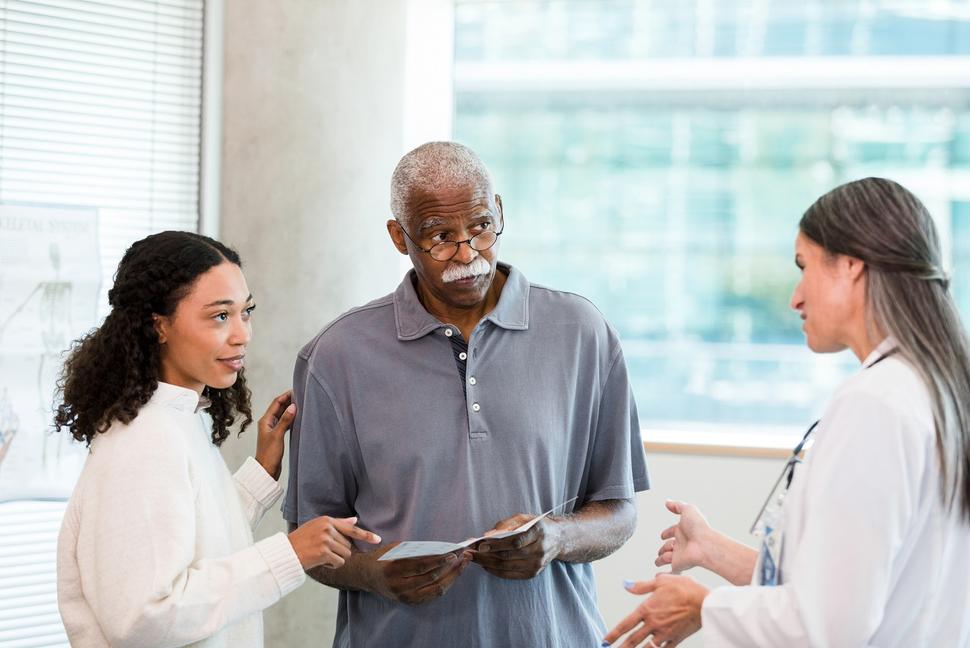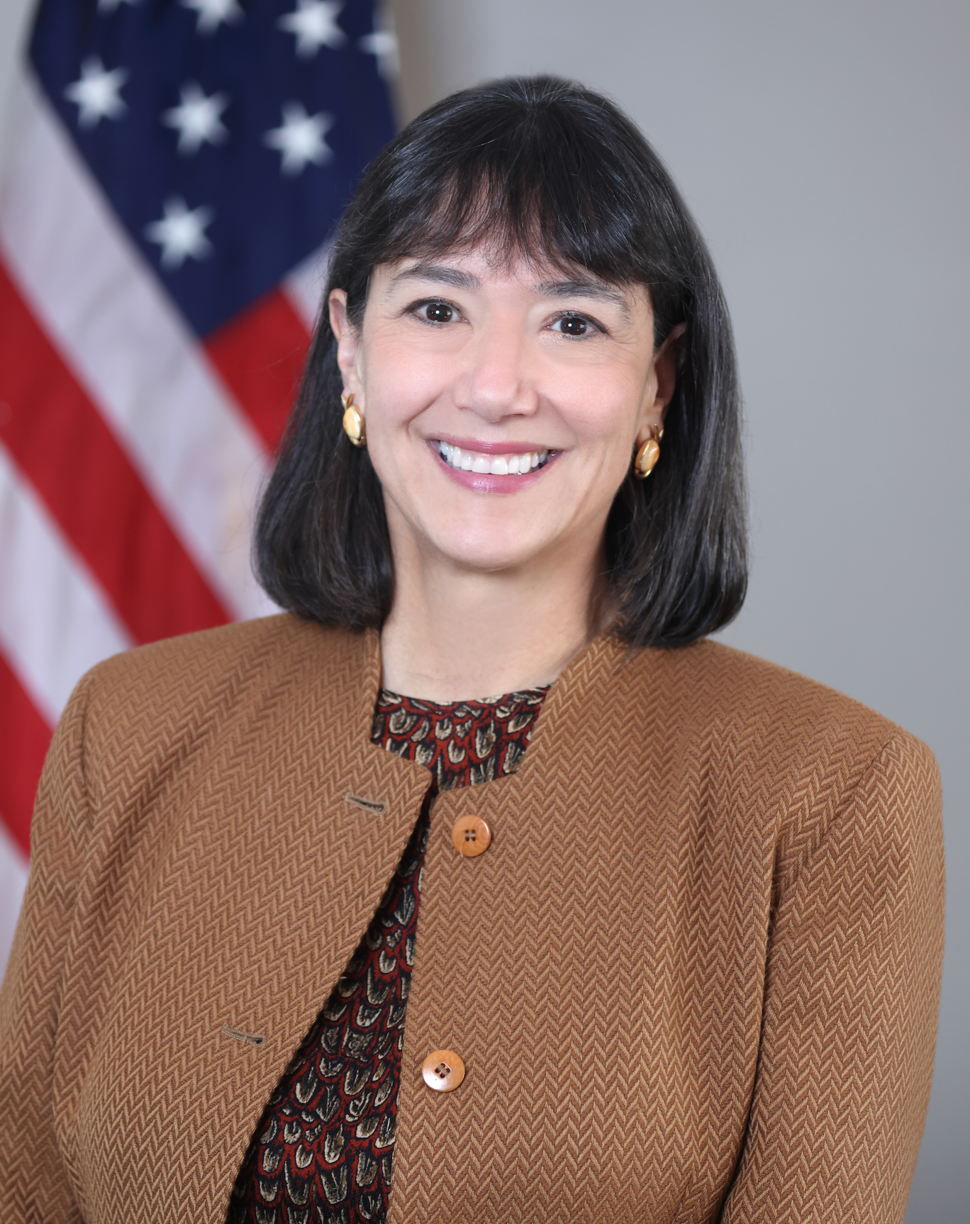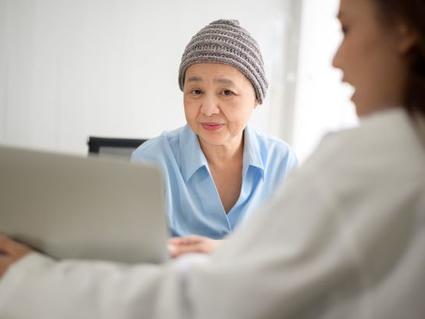Transforming Cancer Clinical Trials for Better, Faster Results
, by Ben Colmery
NCI has a broad array of programs that support clinical research, from early-stage clinical trials to large randomized trials. According to an analysis by the SWOG Cancer Research Network, clinical trials conducted within NCI’s National Clinical Trials Network (NCTN) are estimated to have extended the lives of patients with cancer in the United States by at least 14.2 million life-years through 2020.
In this Q&A, NCI Director Monica Bertagnolli, M.D., and Deputy Director for Clinical and Translational Research James H. Doroshow, M.D., talk about the challenges of clinical trials and important steps NCI is taking to improve their effectiveness.
Why are clinical trials important to cancer research?
Dr. Bertagnolli: It’s really simple. None of the brilliant findings by scientists who study fundamental cancer biology, on through the continuum of cancer research, will ever lead to patient benefit without clinical trials. Trials answer many clinical questions relevant to all aspects of health care. Clinical trials tell us whether a new approach is safe and whether it works, determine whether an intervention can prevent cancer or extend the lives of people with advanced cancer, or improve patients’ quality of life.
Unfortunately, the old model of clinical trials is not meeting our current needs. As NCI conveyed in the Fiscal Year 2024 Annual Plan and Budget Proposal for Fiscal Year 2024, we need to make a big investment to expand and modernize cancer clinical trials to more quickly produce the prevention, detection, and treatment measures that will end cancer as we know it.
What are the major challenges in cancer clinical trials today?
Dr. Bertagnolli: When you boil it down, we just don’t have enough people participating. Only a small percentage of people with cancer or at risk for cancer participate in clinical trials today, which greatly limits our capacity to evaluate new interventions. We really need, at the very least, to double the number of people participating in our clinical trials. That’s the problem we have to solve, first and foremost.
Dr. Doroshow: The COVID-19 pandemic greatly exacerbated this problem. We saw a significant drop in clinical trials accrual in 2020, the first year of the pandemic. Fortunately, enrollment to NCTN and industry-sponsored trials have rebounded well. However, the numbers are still down for investigator-initiated trials at cancer centers and extramural sites. Even if we get back to where we were before the pandemic, we would still be nowhere near the accrual levels we need to make rapid progress.
Dr. Bertagnolli: One of the biggest things holding us back is that we have, by and large, failed to recruit certain populations of people to participate in trials, particularly people of color and people who live in rural areas. Clinical trials just aren’t an option for many people when they have to travel long distances and take time off of work to participate. As researchers, we have to go to their communities. We can't expect them to come to us.
Another big issue is that the criteria to enroll are often overly restrictive, meaning that very few of the people who might benefit once an intervention is proven effective are actually eligible to enroll. We need to make it possible for everyone with cancer or at risk for cancer to have a realistic opportunity to participate in research—including people from diverse backgrounds—to ensure we produce the best science that benefits people from all populations and gets results much faster. We have to think differently.
What kinds of changes need to be made to clinical trials so more people can participate?
Dr. Doroshow: Over the past few decades, conducting trials has become increasingly expensive, in terms of time, money, and resources—often out of necessity to answer important research questions. However, we don’t have the resources to conduct all the trials it would take to help everyone with cancer. We really need to find ways to achieve greater efficiency where possible, so that we can fund more trials and accrue more people faster.
A big area where we think we can make a real difference is in clinical trials data. Researchers collect enormous amounts of data in clinical trials. Our tendency is to want every piece of data that might reveal an important insight. Unfortunately, the tradeoff is that obtaining every piece of data costs time and money. But we’ve found that much of the data we collect, in fact, have no effect on outcome, are unnecessary, and go unused.
An example of this is collecting data on the side effects of treatment for late-stage trials that involve drugs that have been around for years when we already know their typical side effects. Or collecting imaging data that don’t ultimately get used. It's extraordinary how much data we collect, much of which I don’t think we need to get results that will help patients. We could achieve real savings in time and cost if we stop collecting data we don’t actually use.
Dr. Bertagnolli: I absolutely agree. It doesn’t benefit our patients if money and time we could use to make it easier for them to participate in trials instead goes to collecting data that won’t help anyone.
There’s another side to the data cost equation, though. There may be data we could do without, but there is still so much data we do need, especially from underrepresented minority groups and children. We have to store that data somewhere and make it accessible to the research community. The computing power alone that is needed, and getting the data to those who need it, comes with a very high cost. We need strong investments in collecting the right data.
NCI is making great headway to get much needed data into the hands of scientists through crucial new data resources like the Childhood Cancer Data Initiative, which is showing the great power of data sharing and collaboration. However, NCI alone will never be able to cover the costs of all the data we need to make progress for everyone facing cancer. We need to collaborate with other organizations to leverage and share resources.
In recent years, NCI has focused on strengthening the cancer research workforce. What kinds of workforce concerns need to be addressed in cancer clinical trials?
Dr. Doroshow: The state of the cancer clinical trials workforce—the people who design and run trials—is definitely a big concern right now. We conducted a survey of NCI-Designated Cancer Centers to help us understand the drop in trial accrual during the pandemic. We found that workforce issues clearly affected clinical trial capacity. A lack of staff limited the number of trials that could be opened, and many open trials had to be put on hold.
The biggest reason we found for this staffing shortage was that people left for higher pay or career advancement. The next biggest reason was that they wanted the ability to work remotely, which many found in other jobs. After that was burnout because of being understaffed and difficulty in performing their jobs day to day. So, the pandemic has clearly taken a toll on clinical trial resources and put even greater strain on those who have stayed.
Dr. Bertagnolli: I am very concerned about having the people we need to conduct trials. If this attrition trend continues, it could have serious long-term consequences for the speed of our progress. More and more strain could be put on people who stay in clinical research, and we may face greater challenges launching clinical trials.
The other issue we absolutely need to address is that the workforce, in clinical trials and many other areas, still does not reflect the diverse communities we serve. We know that a lack of trust in biomedical research can be a major barrier to participating in research. Having a workforce that reflects the community can be a great way to build that trust and bring perspectives that will help us produce the best science.
We all have a role to play to ensure that people from all backgrounds are well represented in our workforce and are welcomed into an inclusive work culture.
What steps is NCI taking to improve cancer clinical trials?
Dr. Doroshow: We’ve been working on the question of how to improve our clinical trials for some time now. We determined that we could develop flexible, faster, simpler, less expensive, and higher impact clinical trials by focusing on four key areas: streamlining processes for trial design and execution, focusing on essential endpoints, setting up trials in a way that broadens rather than limits participant access, and increasing efficiency of data collection.
These recommendations came from a report released by the Strategic Planning Working Group of NCI’s Clinical Trials and Translational Research Advisory Committee (CTAC). You’ll see that a lot of what we’re now doing follows from those recommendations.
A perfect example of how we’re putting these insights into action is the S2302 Pragmatica-Lung Study, which we recently launched through NCTN. In this trial, the idea is to only collect the data that are absolutely needed to answer a straightforward question: For some people with non-small cell lung cancer, is a combination of the targeted therapy ramucirumab (Cyramza) and the immunotherapy drug pembrolizumab (Keytruda) better at prolonging life than current standard therapies?
We already know a lot about how each of these drugs works, which is why we’re now only focused on their combined effect on survival. The eligibility criteria are extremely broad, to help us ensure we have broad representation and can complete accrual quickly. We’re not just looking for a more effective treatment for patients—we think what we learn from this trial will pave the way for broader improvements in many NCI trials that could employ similar approaches.
Dr. Bertagnolli: I’m especially excited about how quickly the Pragmatica-Lung Study has come together. What made all the difference was the willingness of all parties—government, industry, and academic collaborators—to work together and eliminate the delays that normally occur when you have multiple groups involved in a trial.
And now we're opening this simple but very important trial across the nation that is focused on rapidly engaging patients, particularly people from populations too often left out of clinical trials. Those who tend to face greater societal barriers are also the people at greatest risk for non-small cell lung cancer in the first place.
Dr. Doroshow: If we’re going to transform how clinical trials are conducted, we really need a way to identify and test new approaches to understand what works without disrupting trials already underway. To this end, we’re launching a Clinical Trials Innovation Unit (CTIU). The unit will select a few high-priority studies that could be done with radically new study designs and operational procedures, and then work with partners necessary to carry them forward through the NCTN.
Dr. Bertagnolli: All aspects of clinical trials are on the table: things like study eligibility, comparator arms, endpoints, diagnostics, study data collection procedures, and participant engagement strategies. Everything that can be adapted to achieve more and faster benefit for patients is open to innovation. Our aim is for trials facilitated by CTIU to set new standards for how particular research questions are addressed, including new models of study design, data collection, and collaboration that will help us get answers faster and more effectively.
Dr. Doroshow: It’s important to note, though, that what we learn could make sense for some future trials, but not all. We can’t assume that any approach will be “one-size-fits-all.” We will also likely find that any new approaches may have a shelf life, so it will be essential to keep in mind that the need for innovation will always continue.
Dr. Bertagnolli: That’s so true. We have to think about innovation as ongoing, not something we can invest in today and expect to call it done.
Organizationally, we’ve placed CTIU in the Coordinating Center for Clinical Trials (CCCT), led by Dr. Sheila Prindiville. This is important because CCCT and CTAC are well-positioned to facilitate broad adoption of innovations tested through CTIU.
We’re also bringing in Dr. Michael Morris, a medical oncologist from Memorial Sloan Kettering Cancer Center, as the CTIU co-director, along with Dr. Prindiville. Dr. Morris is perfect for this, since he is a senior clinical trials leader who's worked closely with the extramural research community, industry, the community oncology networks, FDA, and NCI. He knows what it takes to assemble the right partners to conduct clinical trials. This is important because this unit is a collaboration between NCI, FDA, and extramural members of NCTN.
We recognize that to get to where we need to be with trials will require more investment and will take real partnership. NCI can’t do it alone. So, as we work to transform trials, we are exploring additional partnerships with industry, network groups, academia, and others to take full advantage of the opportunities we see.
This is the thinking behind our newly released National Cancer Plan. If we are going to end cancer as we know it, we need a plan that will guide our work and align the activities of the cancer community as a whole, for faster results—and this plan provides that. There isn’t a distinct goal about clinical trials in the plan, because improving clinical trials is foundational to progress across several of the plan’s goals.
Everything we must do to end cancer as we know it—to address pressing challenges, including those we’ve raised here—is in the plan.
Everyone working tirelessly to overcome this terrible disease should see in the plan the role they play and how they fit into this larger societal effort. Think of what we can achieve if we all focus our energy and resources together to create an inclusive clinical research enterprise that effectively channels new discoveries into health care to allow all people to live without cancer’s harmful effects.



